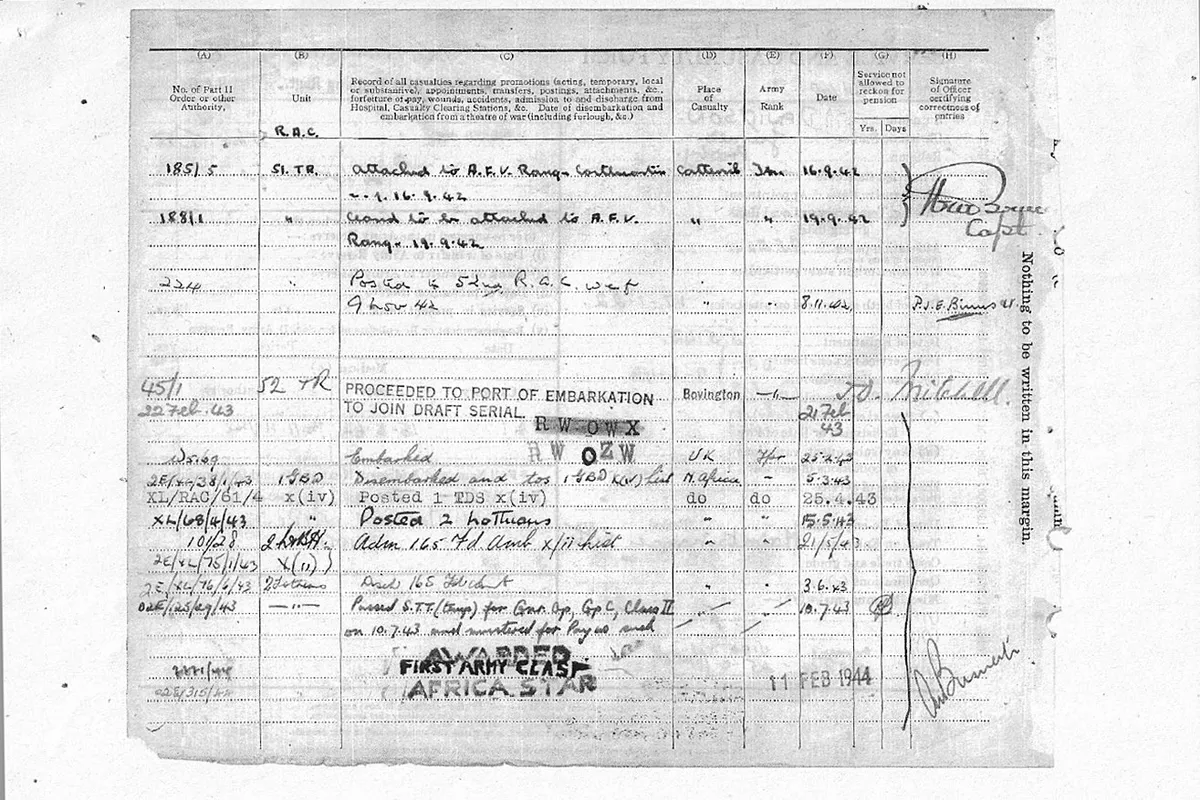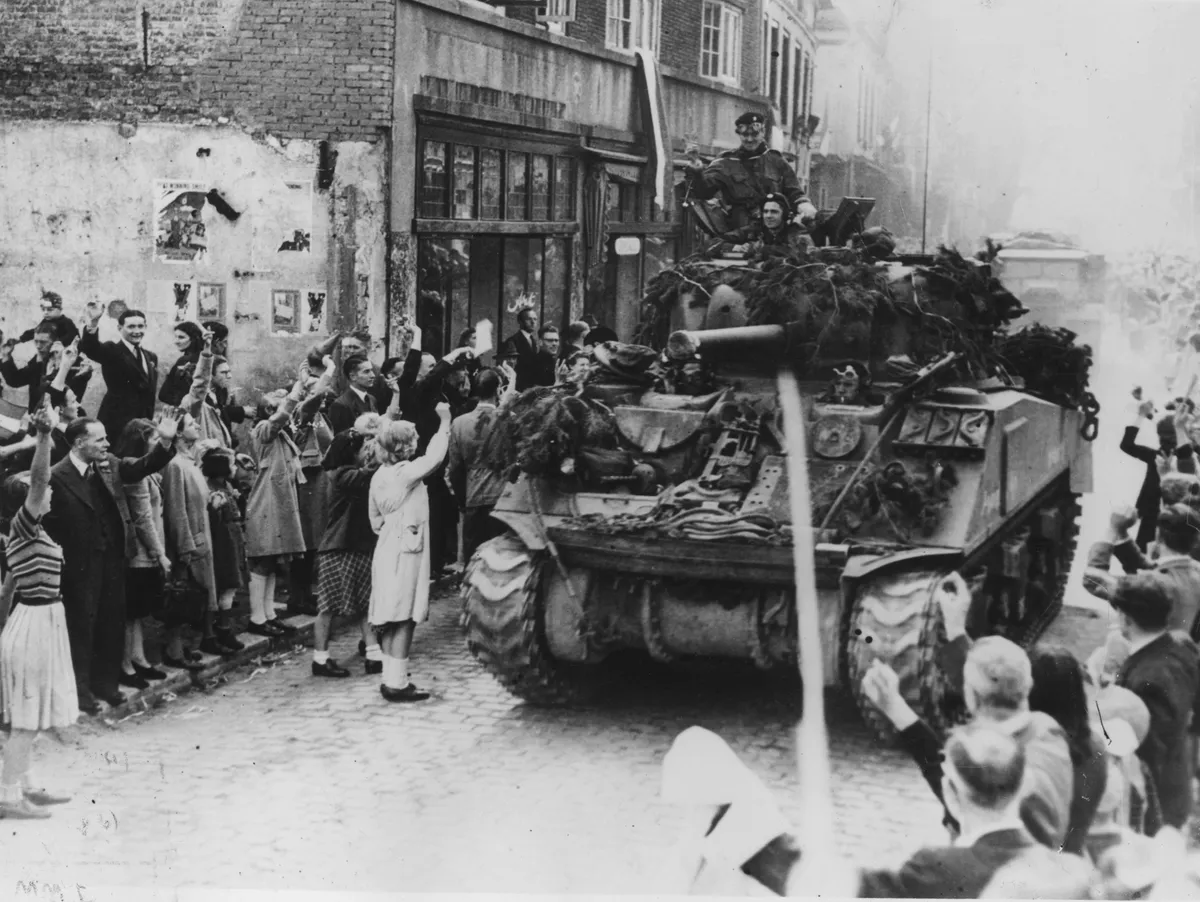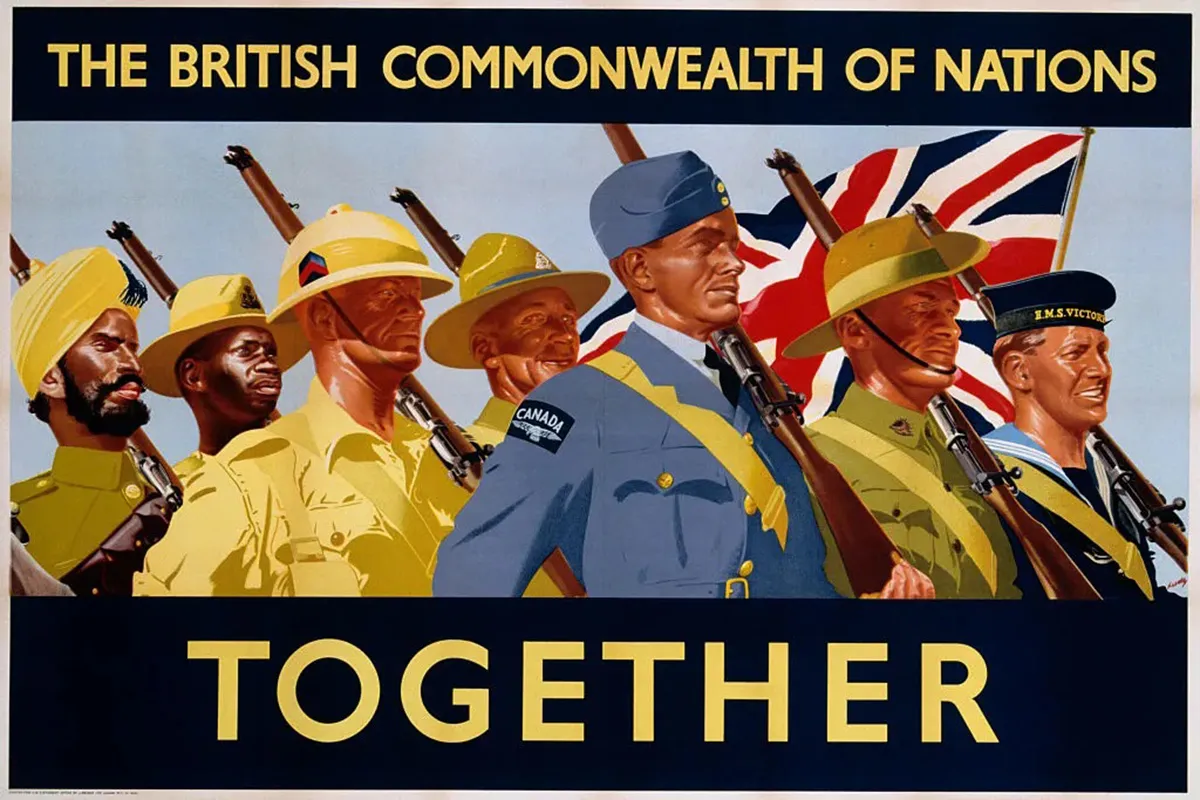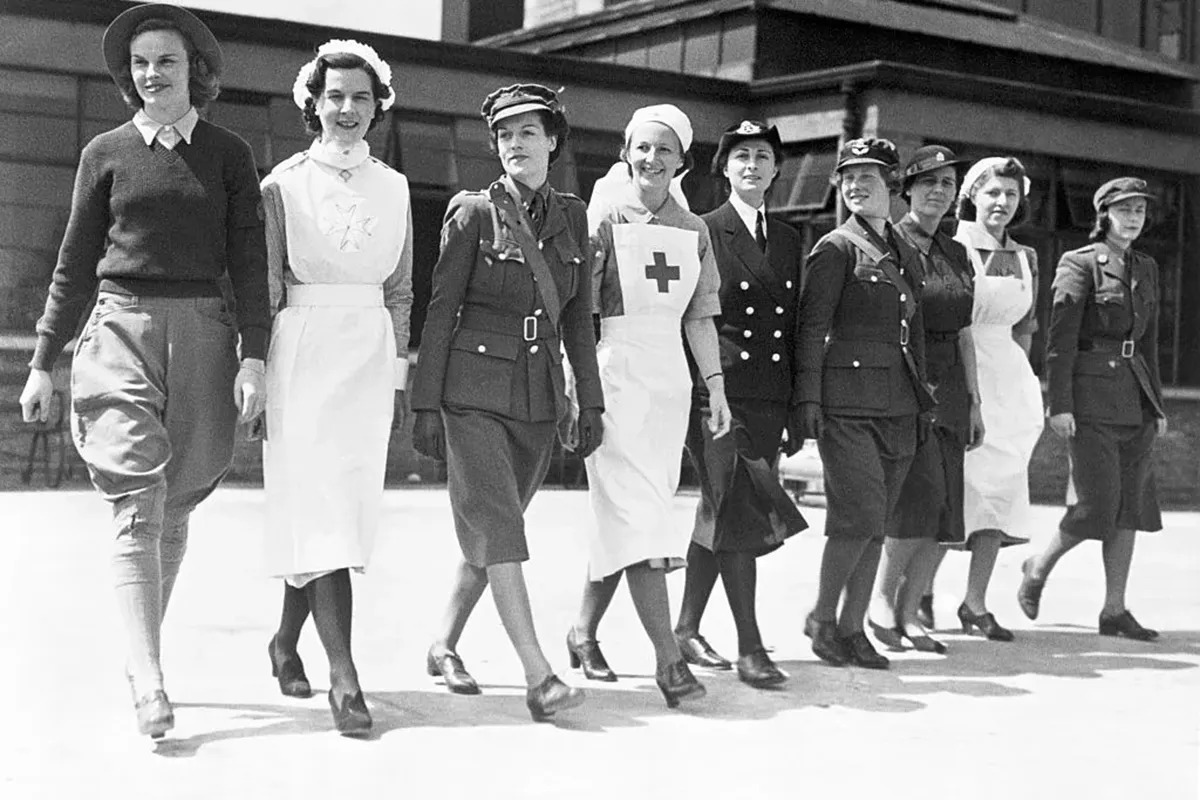As the Second World War passes from living memory, what was once a question of talking to a relative about their wartime service has now become a historical investigation. At its peak, 2.9 million British men served in the Army during the Second World War.
- Discover ancestors who served with the RAF during the Second World War
- Discover ancestors who served in the Navy
- Discover ancestors who served in the Merchant Navy
It is highly likely that someone in your family served in the British war effort between 1939 and 1945. Fortunately, unlike the First World War, Second World War records for service in the British Army survive in their entirety.
How to get Second World War Army service records
What information is included in Second World War Army service records?
Second World War Army records: War Diaries
Second World War Army records: Casualty lists
Second World War Army records: Commonwealth soldiers
Women's Second World War Army records
How to get Second World War Army service records
Second World War Army service records were traditionally held by the Ministry of Defence (MoD), but are now in the process of being transferred to The National Archives (TNA). They will eventually be digitised by family history website Ancestry. All records of non-officers in the British Army are now held by TNA. Some records of service personnel born over 115 years ago have now been added to Discovery, TNA's online catalogue, meaning you can search Discovery directly for the individual's name and then arrange to view the records at TNA. For records of individuals born over 115 years ago which aren't available on Discovery, you can submit a request to access them here. For records of individuals born less than 115 years ago, you can submit a request here. If the records are not held by TNA and are still held by the MoD, they will tell you, and you will then have to apply via the MoD. Note that Scots Guards' records are held by their own archive. Records of deceased personnel who served in the Royal Navy, Royal Air Force and Home Guard are still held by the MoD. You can apply for them here. Service records of individuals born over 115 years ago who served in the Royal Electrical and Mechanical Engineers and various smaller units including the Pioneer Corps, the Military Police, the Royal Corps of Music, Royal Army Veterinary Corps and the Royal Army Dental Corps are now available on Ancestry, as are over one million medal cards for former servicemen or their next of kin who requested their medals after the war.
What information is included in Second World War Army service records?
Second World War Army records generally comprise forms, or cards summarising general correspondence. The document you'll receive will be a photocopy of the service record which will usually be between six and 14 pages long. Records of officers or those who died or were discharged during the war tend to be shorter.
These contain some family history information (date of birth, details of spouse, next of kin) but mostly deal with postings, service abroad, courses attended, injuries or wounds, and personal conduct.
The Second World War Army records may consist of a variety of forms and cards including enlistment documents (Army Form B284), which may include brief records of service, Regimental Conduct Sheets (recording disciplinary offences like drunkenness or overstaying leave), Medical History and Dental Treatment sheets.
The most useful Second World War Army record is the Service and Casualty Form (Army Form B103 - see example below). This gives basic personal information, then details promotions (acting temporary, local or substantive), appointments, transfers, postings, attachments, forfeiture of pay, wounds, accidents, admission to and discharge from hospital, Casualty Clearing Stations and so on. Date of disembarkation and embarkation from a theatre of war (including furlough) are also included. The whole basic structure of the soldier’s career is here!

There may also be an Army Form B102, which contains similar information to the B103, but usually in more condensed form. There may also be Discharge Papers, which provide some details of where they served, along with a testimonial (brief written note by an officer saying how they conducted themselves).
Second World War Army records include a lot of military jargon usually in the form of abbreviations and acronyms, but once deciphered you can follow a soldier's movements through most of the war. The Library and Archives Canada has a useful list of military abbreviations and acronyms.
Don’t expect to find anything about what the unit your relative served in was actually doing – for this sort of detail you’ll need to consult their War Diary. The service record should provide enough information to help you trace the relevant diary(ies).
Second World War Army records: War Diaries
All Second World War Army units kept a War Diary, recording their daily activities, invaluable for finding records of movements, training and fighting a relative took part in. Diaries are at TNA, held by ‘theatre’. If a unit served in France in 1939, then in Britain after Dunkirk, later in North Africa and in France after D-Day, you’ll have to search several theatres to get the whole history. Diaries may include maps, orders, intelligence, lists of men attached from other units or away on detachment and notes on operations.

Second World War Army records: Casualty lists
If your relative died serving in the Second World War, you can search for them on the casualty lists held by the Commonwealth War Graves Commission, which has records of everyone killed in the service of their country since 1914. You can search the database here.
Second World War Army records: Commonwealth soldiers
Second World War Army records for the main Commonwealth countries (Canada, South Africa, Australia and New Zealand) are held by their respective Armed Forces or Records Offices.

Details of New Zealand records are available from Archives New Zealand.
For Canada, many Second World War Army records for those killed in action are available to search on Ancestry. Second World War Army records for those who survived are restricted and you will have to request permission on how to view them. Full details on Canadian Second World War records are available on the website of Library and Archives Canada.
A good place to start for Australian Second World War Army records is at the Department of Veterans' Affairs Nominal Rolls, which give very basic details of over one million Australian servicemen and women. The National Archives of Australia is in the process of digitising Second World War records and many are already freely available online via the National Archives of Australia. There is also a collection of service documents for individuals serving with the AIF (Second Australian Imperial Forces) or CMF (Citizen Military Forces) on Ancestry.
South African Second World War Army records are held at the Department of Defence, Documentation Centre in Pretoria. You can email archive@dod.mil.za.
Colonial Servicemen: Many men and women from the smaller colonies enlisted to fight in the British armed forces, and their records should be available through the record offices of the three armed forces in Britain.
The West Indies formed the Caribbean Regiment, which served in the Mediterranean theatre later in the war – their war diaries are in TNA.
Indian Service Records: The Indian government had its own armed forces. Records for British officers and warrant officers are held in the collections of the India Office Records in the British Library, in their L/MIL series. The India Army List also gives details of their service. The vast majority of servicemen were, of course, Indian (Pakistan was only formed after the war). Their service records seem to have stayed in India after independence, but political considerations meant that for many years they have been neglected and their exact whereabouts are unknown.
It may be worth contacting the Indian National Archives. As some Gurkha Regiments stayed with the British Army post-independence, you can try contacting the Gurkha Museum.
Women's Second World War Army records
Hundreds of thousands of women served during the Second World War. Conscription was introduced for women in 1941.

Auxiliary Territorial Service (ATS)
In the British Army, women generally served in the Women’s Auxiliary Territorial Service (ATS) as clerks, drivers and mechanics, in radar stations and decoding units and operated anti-aircraft guns. In June 1943, there were 210,308 officers and women in the ATS.
ATS Second World War Army records are in the same Glasgow MOD office as their male counterparts. Most ATS members served on attachment to other units, so you’ll need to find the War Diaries from the units they served with, though there are some War Diaries specific to ATS units throughout the main series. You can search on TNA’s catalogue using ‘Auxiliary Territorial Service’ as the key search term. The Women’s Royal Army Corps Museum collection has passed to the National Army Museum. Although there are few records currently online, there are useful websites for family historians such as ATS Remembered.
First Aid Nursing Yeomanry (FANY)
A small volunteer organisation formed before the First World War, the FANY formed the basis of the first ATS Motor Driver Companies. Other FANY were attached to the Polish Army. Many FANY joined Special Operations Executive (or were commissioned into FANY as cover) serving as cipher clerks, radio operators and administrative assistants. Many of Special Operations Executives’ women agents were FANY.
Second World War Army records for FANY members are held at an MOD location in London. To find out more about the records, including photographs, held by the archive, visit the FANY website or email hq@fany.org.uk.
Nurses and the Voluntary Aid Detachment (VAD)
The Army nursing service was provided by Queen Alexandra’s Imperial Nursing Service. Second World War records for members of the VAD are held by the MOD in Glasgow. A few hospital War Diaries are available at TNA. A specific medal awarded to military nurses is the Royal Red Cross. There are Registers for awards covering the Second World War in WO 145/2 and WO 145/3. A transcription of the registers is available on Findmypast. Medal citations are in WO 373.
The VAD was part of the Red Cross, running hospitals and convalescent homes as well as helping staff military hospitals, acting as support staff to nurses, administrators, ambulance drivers and cooks. VAD service records are held by the Red Cross in the form of record cards, information on which may include dates of service, the nature of duties performed, the detachment belonged to, the institutions and places where they served and any honours awarded.
Not all records survive, but you can contact the Red Cross heritage team at enquiry@redcross.org.uk. Provide as much information about the individual as possible. In particular it’s useful to include: any known addresses, middle names, maiden or married names, date of marriage, any known service details and date of birth. There is no charge for enquiries, but they do ask you to contribute £5 or more to the British Red Cross to help cover costs.
